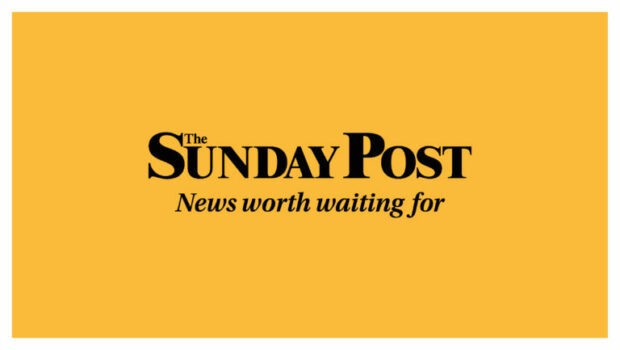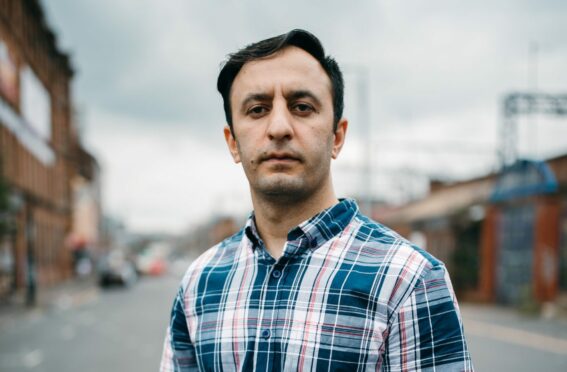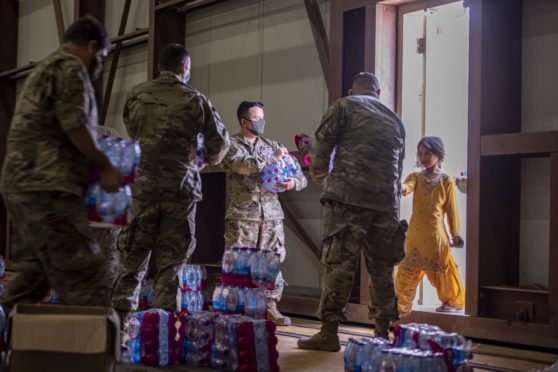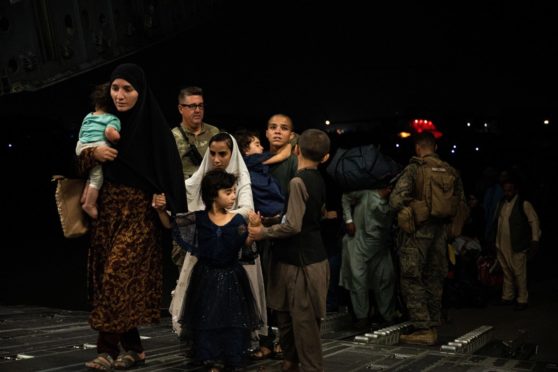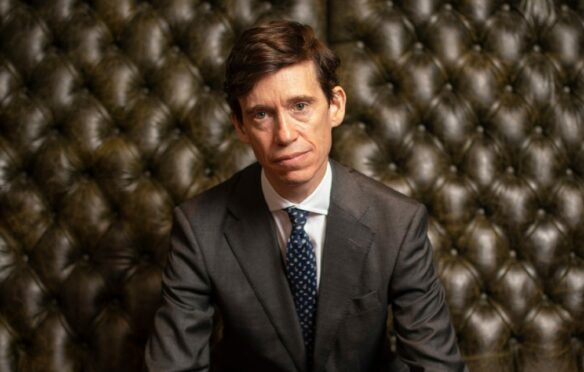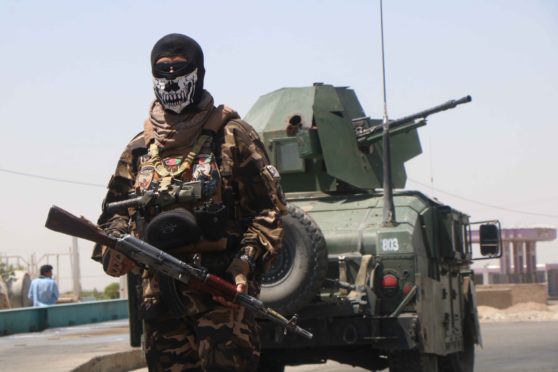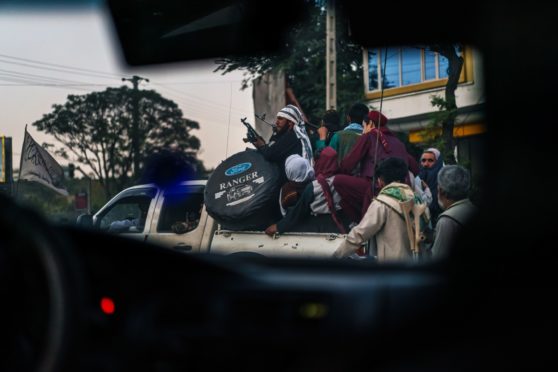
In the hurtling days since the abrupt departure of President Ashraf Ghani precipitated the collapse of his government, the green, red and black Afghan national flag has become a rallying symbol for a growing resistance movement against the Taliban,
In Kabul and a number of other cities, there have been brave street demonstrations of crowds carrying the flag of the Afghan republic, tearing down the white Taliban flags that have replaced it. The protestors have been met with violence.
The republic is making a last stand in the smallest province in the country, Panjshir, a long, lemon-shaped valley, about three hours drive north of Kabul, the only province not in Taliban hands. If there is an armed uprising against Taliban rule, it is likely that this is where it will start.
The vice president Amrullah Saleh declared himself president a day after President Ashraf Ghani fled the country in fear for his life, and is in Panjshir. He is allied with Ahmad Massoud, the son of famous guerrilla commander, Ahmad Shah Massoud, who was killed two days before the 9/11 attacks 20 years ago.
The valley holds a legendary place in modern Afghan history as it was never taken by Soviet invaders in the 1980s, nor the Taliban in their first administration in the late 1990s. It is a natural fortress surrounded on three sides by 4,000 metre high mountain ridges, with the only entrance a narrow winding valley to the south.
As word spread around the country, others have trickled in through treacherous mountain passes to join the fight, alongside irregular militias keen to burnish the legend of Panjshir. For now Ahmad Massoud has said that he is willing to hear what the Taliban have to say, but he also says he has been collecting weapons ahead of this day for years.
There are no reports of Taliban attempts to take the valley – yet. They are in conciliatory mode. There have been a remarkable series of meetings between Taliban leaders and leading figures from the former government, including Hamid Karzai, president until 2014, and the leader of the peace process, Abdullah Abdullah, who has even been allowed to continue to use his lavish Sapedar Palace.
With others, they have formed a conciliation council, as if to hand over power to the Taliban. This is a fiction to give the appearance of the Taliban forming an inclusive government. But the conciliation council has no power to hand over, and the third leading member, Gulbuddin Hekmatyar, was himself allied to the Taliban until 2016.
Taliban crave international recognition
The moderate face of the Taliban in the past week, including an apparently open press conference, and no crackdown on the media, is designed to deliver legitimacy for the administration. They crave international recognition, which was not forthcoming when they were last in power. That is why the holdout of Panjshir, and Saleh’s claim to be the continuing Afghan republic, is important. It is states not governments that are recognised, but this can be finessed in the case of rogue regimes.
If Saleh can build support, and already the Afghan embassy in the neighbouring country of Tajikistan has acknowledged his claim, then it would be an excuse for western governments not to recognise the Taliban.
Another challenge for recognition is what kind of administration it will be. Mullah Baradar is expected to be the leader of the new country, but it is unclear what his title will be. Last time they were in power their reclusive leader Mullah Omar was the “Emir” of the “Emirate of Afghanistan”. But he never left his modest house in Kandahar, and military and political councils ran the government.
The Emir of the movement now, Haibatullah Akhunzada, does not have the unquestioning authority that Omar enjoyed, and there are even rumours that he may be dead. Baradar, or whoever emerges as the leader of the country, will want some kind of swearing-in ceremony, with as many of the conciliation council and other former Taliban opponents to be there.
The Gulf states – Qatar, United Arab Emirates and Saudi Arabia – along with Pakistan, China and Russia, are expected to recognise the Taliban as the government as soon as it is formed. So this issue could be a new international fault line. China received assurances of new trade routes across the north of Afghanistan, and the Taliban have also promised not to allow Uighur militants safe haven.
But it is an open question as to whether the moderate-looking leaders, who have spent the last decade in Doha, do speak for the movement. Until the walkover when Afghan government forces collapsed and the president fled at the end, the fighting was bloody, with heavy Taliban casualties, and those who fought it have taken a far harder line than the public-facing figureheads. Last month, there was a rumbling argument on Taliban social media about whether to kill Afghan troops who had surrendered. No, said the Doha leaders; yes, said the fighters. They may not accept the conciliatory tone adopted in Kabul.
A young country
This hardening of views among young fighters means that in many ways Taliban 2.0 are worse than before and certainly more unpredictable. There are credible reports of the Taliban taking young women out of their houses to be given to fighters as war booty.
This is new. I spent a lot of time in Afghanistan in the late 1990s during the first Taliban administration, and there were no such reports then. It is a tactic copied from Islamic State and other jihadis who promote extreme violence and have a more internationalist agenda.
These reports were one reason for the huge movement of people into Kabul, fleeing the Taliban advance. There is now nowhere left to run. But it will be far harder for the Taliban to administer Afghanistan than it was when they took over in the rubble of a bitter civil war in 1996. Not all of the aid in the last 20 years was wasted.
It is a very young country; around half of the population were not born when the Taliban were last in power. An expectation by women that they will have better rights has taken hold across the country, and the Taliban govern with very little consent. The last authoritative opinion poll in 2019 put their support at less than 15%.
As the Taliban go house to house with lists of names, those who worked with the west and prominent human rights activists are legitimately in fear for their lives. The lists come from a sophisticated intelligence operation, which could point to close collaboration with Pakistan’s military intelligence service, the ISI.
Many Taliban speaking Punjabi and Urdu, the languages of northern Pakistan, have been heard. And there are also reports of some fighters who do not speak languages recognised in the South Asia region.
All of this suggests that out of sight of the cameras there are Taliban actions that are not on the script of the current charm offensive by their leaders. This will only increase support for acts of resistance, and for an armed uprising if Saleh is able to mobilise it.
David Loyn is a visiting senior fellow in the War Studies Department at King’s College, London, and author of a forthcoming book, The Long War – the Inside Story of America in Afghanistan

Enjoy the convenience of having The Sunday Post delivered as a digital ePaper straight to your smartphone, tablet or computer.
Subscribe for only £5.49 a month and enjoy all the benefits of the printed paper as a digital replica.
Subscribe